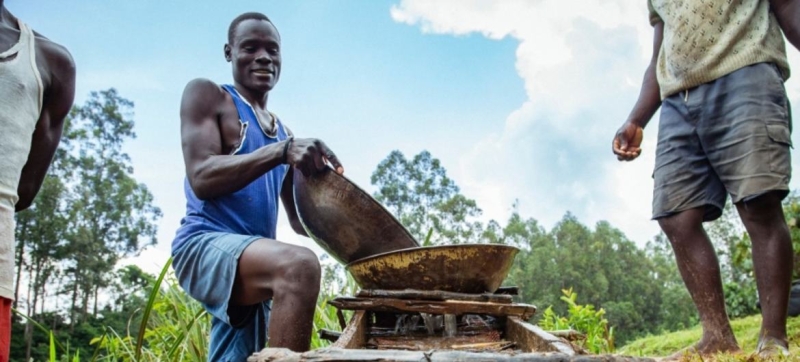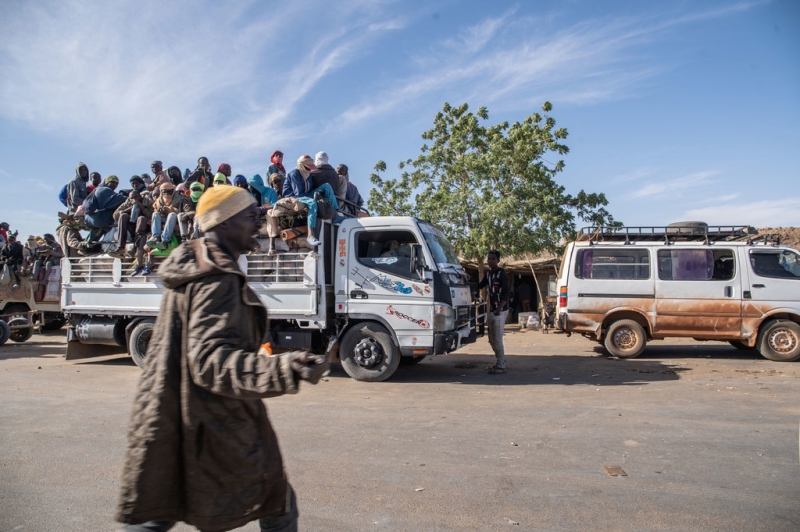
Many small-scale mines use technology that is about three thousand years old to extract gold. PLOT | Africa: how gold mining and human trafficking are interconnected Refugees and Migrants
The golden-green savannas of the Kédougou region in southeastern Senegal are dotted with deep black holes. Here, on the border with Mali, 98 percent of the country’s gold mines are located. Local residents have been mining the precious metal for several decades, but in recent years the region has been experiencing a real gold rush.
The boom in gold mining attracts foreign miners and stimulates demand for sexual services. The situation is aggravated by the fact that several popular migration routes pass nearby. Migrants who turn to smugglers for help to cross the Mediterranean often fall into the trap of sexual or labor exploitation. Many never make it to the sea. Some never escape at all.
What happens to migrants as they wander, and how criminal gangs profit along these routes, is revealed in a recent report by the United Nations Office on Drugs and Drugs. crime (UNODC).
Smuggling of migrants
“Without opportunities to migrate legally, many people turn to smugglers to make travel easier and faster,” says Alexander Schick, UNODC expert on human trafficking and one of the report’s authors. “Many of them are fleeing wars, persecution, natural disasters, or simply looking for a better future in another country.”
For assistance in crossing the Mediterranean Sea on the way from North Africa to Europe Smugglers earn up to six thousand euros for just one migrant. It is an extremely profitable business, with annual turnover ranging from $320 to $550 million.
The Mediterranean Sea is known as one of the deadliest routes for refugees and migrants. At least 28,802 people have gone missing or died in the region over the past ten years. Many were sent out to sea by smugglers on unseaworthy ships.
“A significant proportion of those who go on these journeys never make it to shore,” says Zoe. Sakelliadou, Crime Prevention and Criminal Justice Officer, UNODC. – Some of them settle here. Criminal networks take advantage of their vulnerable position by extorting money, exploiting them for sexual purposes or for forced labor, especially in the gold mines.”

A truck carrying migrants leaves for Agadez.
“Favorable logistics” for slave traders
Gao is the largest city in northern Mali. Many areas of Gao are controlled by armed groups who sell people into forced labor.
About six thousand children, mostly boys, are forced to mine gold in Mali’s mines in harsh and dangerous conditions. being subjected to physical, sexual and psychological violence. Many of them are refugees, asylum seekers or migrants who work indefinitely until they recoup the costs of their promised trip to “heaven”.
A similar situation is observed in Agadez, in central Niger. The country’s vast territory makes it a major transit point on the central Mediterranean route along which people move from sub-Saharan Africa to North Africa.
Uncertain legal status of mines in this part of Niger, lack state control, high profits from mining, low risk of punishment for criminals and a large influx of migrants create attractive opportunities for smugglers and fertile ground for crime to flourish.
“Criminals widely use central and Western Mediterranean routes because they offer favorable logistics, allowing migrants to be channeled into forced labor and sexual exploitation in mining sites,” says Zoe Sakelliadou.
The “side business” of human traffickers
According to UNODC, there is no single dominant group in the migrant smuggling market. Instead, there are a number of actors operating in the region with varying levels of organization and coordination of actions. , others are controlled by powerful organized criminal networks with a rigid hierarchy and a high degree of professionalism.
The smuggling of migrants along these routes is largely associated with systemic corruption. Smugglers pay bribes to state and non-state actors. This often involves illegal border crossings or the forgery of false passports and visas.
Human smuggling is often intertwined with drug trafficking, particularly the synthetic opioid tramadol. Criminals have turned to this illicit business following a surge in demand for opioids in the Sahel.
Smuggling has recently become an important source of income for armed groups operating in the Sahel region. Their activities range from extorting fares from migrants to kidnapping and holding them captive for ransom.
“To stop these criminal activities, we need a thorough approach on exploring the entire route. Such analysis will shed light on how smugglers operate and what migrants go through,” says Sakelliadou.
